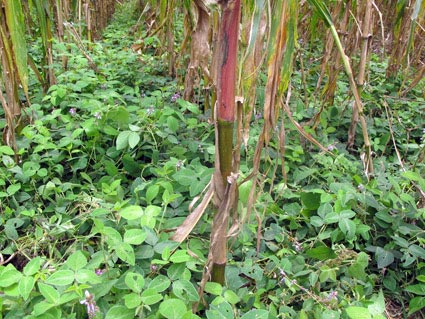 Longer periods of drought and erratic and below-average rainfall in western Kenya have been making farming increasingly difficult over the years. In combination with declining soil fertility and deep-rooted practices of low-farm input application, agricultural productivity in the region has been on steep decline, leaving many farmers desperately staring at famine. However, with introduction of conservation agriculture (CA) via the Sustainable Intensification of Maize-Legume Cropping Systems for Food Security in Eastern and Southern Africa (SIMLESA) initiative in 2010, Kenyan farmers regained hope.
Longer periods of drought and erratic and below-average rainfall in western Kenya have been making farming increasingly difficult over the years. In combination with declining soil fertility and deep-rooted practices of low-farm input application, agricultural productivity in the region has been on steep decline, leaving many farmers desperately staring at famine. However, with introduction of conservation agriculture (CA) via the Sustainable Intensification of Maize-Legume Cropping Systems for Food Security in Eastern and Southern Africa (SIMLESA) initiative in 2010, Kenyan farmers regained hope.
SIMLESA activities are implemented in western and eastern regions by the Kenya Agricultural Research Institute (KARI) with technical support from CIMMYT and financial assistance from the Australian Centre for International Agricultural Research (ACIAR). Over the last two years, SIMLESA has been conducting on-farm trials using CA techniques: minimum tillage, crop residue management, intercropping/crop rotation (with maize and beans or desmodium), and participatory variety selection trials. Members of Tumaini Farmers Field School, Bungoma County, western Kenya, have been using these techniques. “We were in a desperate situation. Maize for us is not only our staple crop; it is also a major cash crop. But yields have been dwindling to levels where they could not sustain our food requirements,” stated Geoffrey Wanjala, the group chairman. “However, conservation agriculture has brought fortunes. With soils regaining fertility and farmers adopting good agricultural practices, yields have started increasing.
Conservation agriculture has also come with low farming costs, as we do not have to invest in time consuming, labor intensive, and costly ploughing and weeding activities. We have decided to adopt the conservation agriculture because of these benefits.”
The success of the trials encouraged KARI and CIMMYT to organize a farmers’ field day to demonstrate the performance of CA technologies. The field day was held in Kanduyi Division, Bungoma South District, Bungoma County, on 17 August 2012, and attracted farmers from other SIMLESA districts in eastern Kenya and over 20 exhibitors, including Kyeni Innovation Learning Platform (ILePs), Ministry of Agriculture, Ministry of Livestock Development, seed and fertilizer companies, World Agroforestry Centre (ICRAF), agro-dealers, and community-based organizations in agriculture, energy, and health.
John Achieng, KARI-agronomist, reiterated KARI’s and CIMMYT’s commitment to developing resilient farming systems that can guarantee good yields even when faced with vagaries of climate change and degraded soils. “KARI will continue to develop new and improved technologies for enhanced agricultural productivity and improved livelihoods,” said Achieng.
George Ayaga, deputy center director of KARI-Kakamega and SIMLESA western Kenya coordinator, lauded the partnerships in implementing SIMLESA, particularly ILePs, noting that they managed to reduce competition among stakeholders, thus enhancing collaboration and reducing implementation costs for partner organizations. “Together you can approach farmers with holistic packages to agricultural production and ensure competitiveness of the agricultural products,” he added. Ayaga also noted that field days were critical in showcasing the best technologies, taking the technologies from the station to farmers’ fields, and involving farmers in the research process through their feedback. Alponkina Nyagah, Kyeni ILePs chairlady, stated that SIMLESA’s work on CA will be crucial for hunger reduction in Kenya.
 Climate adaptation and mitigation
Climate adaptation and mitigation 
